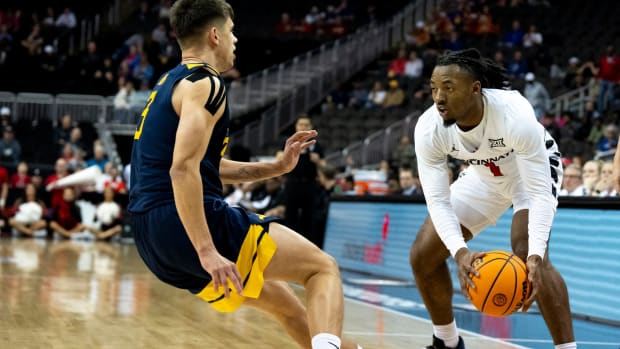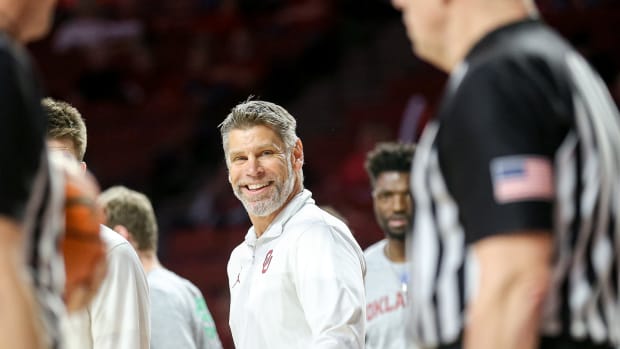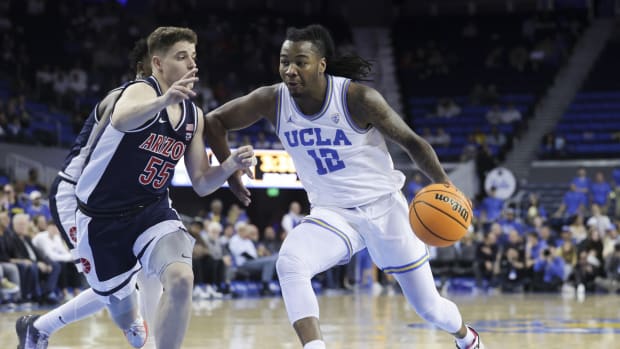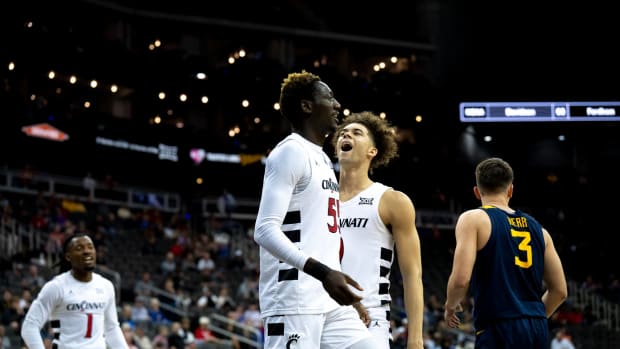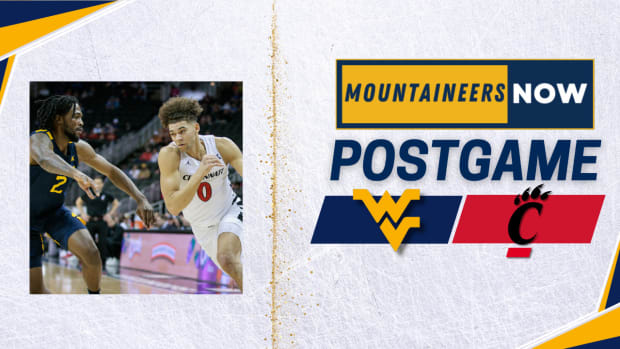No. 11 USC persists to pull out stunner over No. 6 SMU in memorable thriller
TULSA, Okla. — The BOK Center was flush with vociferous, expectant SMU fans on Friday afternoon. Never mind the return to the NCAA tournament after a one-year postseason ban. This was 29 years to the day of the program’s last victory in this event, a 1988 first-round triumph over Notre Dame, and a 30-win team seemed poised to end that ignominious streak.
Instead, it came up agonizingly (and literally) short: A Shake Milton runner hit the front of the iron at the buzzer and USC pulled a 66–65 win out of virtually nowhere, as the Trojans held a lead for all of 76 seconds in this game. Here are three thoughts on what transpired:
1. The game turned on two USC coaching decisions
SMU’s offense was sizzling early; the Mustangs had a 12-point lead and were shooting 70.6% while averaging 1.5 points per possession over the first 12 and a half minutes. After a media timeout at that juncture, Trojans coach Andy Enfield switched to a zone defense. It wasn’t an instant fix—USC still trailed by eight at halftime—but the Mustangs’ looks got progressively worse as the game wore on. USC deployed the zone almost exclusively in the second half, and SMU shot just 38.5% from the floor after intermission, averaging 0.900 points per possession. “Went with zone because we were more active in it, took their middle away, their short corner, and we were rotating well,” Enfield said. “We noticed we could probably defend them better in zone than man. We stayed with it, and it kept working.”
Said SMU coach Tim Jankovich: “I thought it was the most active they played [zone] in any of the games we watched. Maybe not our best day of executing zone offense, but certainly understandable.”
Controversial late call looms over Arkansas's first-round victory over Seton Hall
And sticking with what didn’t work produced the game-winning shot. USC was down two with a little more than a minute to play when it ran a set looking for a corner three-point shot. The Trojans’ Elijah Stewart found himself open … but he never saw the ball. The plan for the next trip was clear. “We discussed it, we ran the same play again and I was open,” Stewart said. This time, the 6’ 5” junior got the ball on a bullet pass from classmate Jordan McLaughlin. And this time, Stewart drained a go-ahead three that provided the winning margin. “Jordan didn’t hesitate,” Enfield said. “He threw a perfect strike to Elijah and [Stewart] made the biggest shot of his career.”
2. SMU’s fluid, egalitarian offense wound up being too much Semi Ojeleye and not enough else ... and then there was no Semi Ojeleye at the most critical moment
Ojeleye, the American Athletic Conference’s Player of the Year, seemed well on the way to becoming a March star. The 6’ 7” junior wound up with 24 points, including one jaw-dropping follow dunk, and 10 rebounds. And while senior Sterling Brown added 17 points, there was scant help elsewhere from a team that featured four double-digit scorers—and another player averaging 9.9 points per game—entering the NCAA tournament.
Sophomore guard Shake Milton, the team’s third-leading scorer, hit two huge three-pointers late but missed eight of his 12 shots from the floor. Ben Moore, an 11.6 points per game guy coming in, scored just five points while battling foul trouble. If Ojeleye or Brown weren’t making shots in the second half, a team that thrived on balance was entirely off-kilter and inconsistent offensively.
And on the final possession, Ojeleye didn’t even get a chance at postseason heroics. SMU brought the ball up with 11.7 seconds left, trailing by one, and Milton was left to battle his way into a crowded lane to hoist the potentially game-winning attempt. “Didn’t execute it great,” Jankovich said. “But you know what, there’s a little pressure in that situation. Didn’t go maybe as well as we planned. That’s no fault of anybody. We got the ball in the paint, it almost went in. If it goes in, we have a whole different conversation right now.”
3. Once USC gets down 10 or more, then the game begins
This was the 13th time the Trojans have won a game in which they, at some point, faced a double-digit deficit. That represents half of their program-record 26 wins to date. “It doesn’t matter who we play, we’re going to get down, and we’re going to come back, and hopefully we pull it out,” Enfield cracked after the win. We’ll see how much resilience USC has left when it plays its third game in six days on Sunday, facing third-seeded Baylor in the second round, especially after the taxing travel schedule it faced getting from the First Four to Tulsa.
Enfield said the team arrived at its hotel here around 4 a.m. on Thursday and was completely gassed after a day of practice and media responsibilities. Either the Trojans will be the latest team to use the First Four as a springboard to the Sweet 16, or maybe those legs will give way should they dig themselves another big hole. “It’ll be nice to catch our breath and enjoy the moment,” Enfield said. “I try to tell our staff and players, you prepare your entire life for these moments. You have to step up. Now, take a deep breath and enjoy the moment.”
